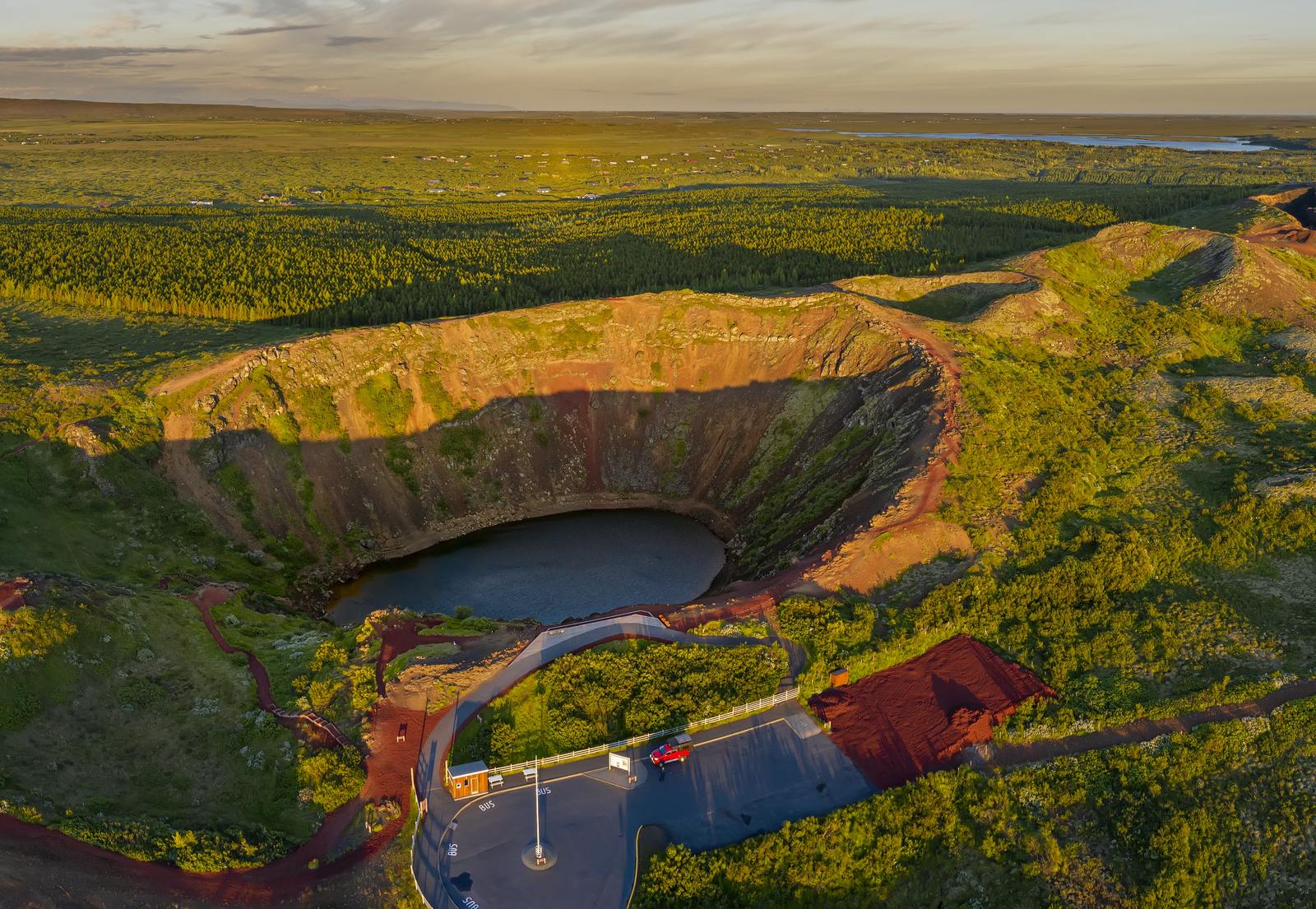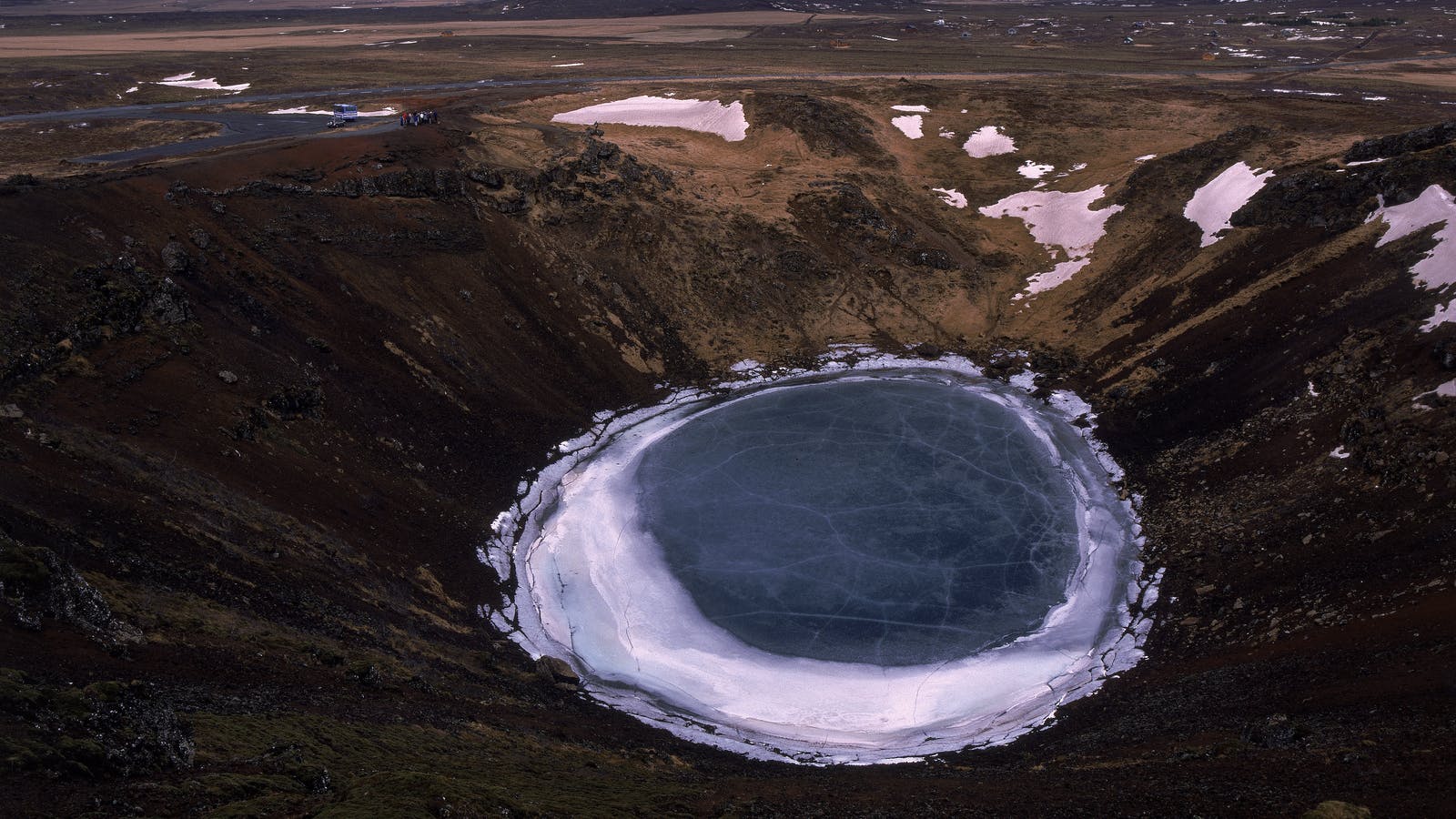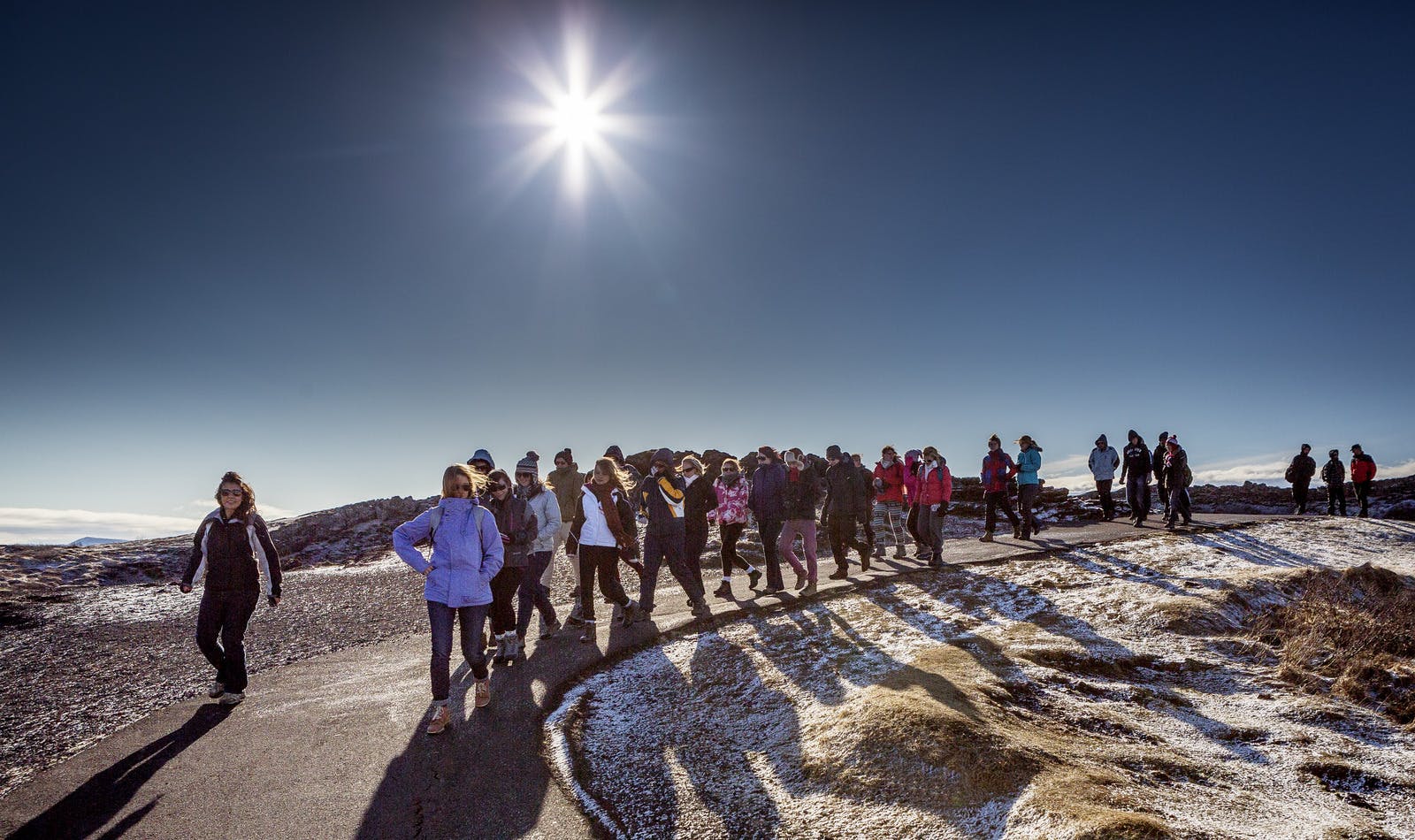
Guide to Kerið Crater Lake
Kerið Volcanic Crater
Iceland is known for its breathtaking landscapes, and one of its hidden gems is the Kerið Crater Lake. Kerið is pronounced k-air-ith. Nestled in the picturesque Grímsnes region, this volcanic crater offers visitors a unique opportunity to witness the wonders of nature up close. With its vibrant blue waters, steep walls, and contrasting vegetation, Kerið stands as a testament to Iceland's geological history.
At Perlan, you can learn more about the role of water in Iceland's natural landscape. The exhibition is visual, lively and interactive, ensuring a good experience for all ages.
Kerið and Icelandic Folklore

Kerið has cultural significance in Icelandic folklore and legends. According to one story, the lake is said to be bottomless and connected to other bodies of water through underground passages.
One of the most popular folklore tales associated with Kerið is about the hidden treasure at the bottom of the lake. According to folklore, many centuries ago, a wealthy farmer lived in the area surrounding Kerið crater. The farmer was known for his wealth and was believed to have amassed a significant fortune. As the story goes, the farmer had a beautiful and kind-hearted daughter.
The farmer, fearing that others might try to steal his wealth, decided to hide his treasure in the depths of Kerið crater. He believed that the location would be safe, as the crater was not only remote but also considered mystical and perhaps protected by supernatural forces.
Before the farmer's death, he entrusted the secret of the treasure's location to his daughter. However, he made her promise never to reveal it to anyone unless the family faced extreme hardship.
How Was Kerið Crater Formed?
Kerið is a volcanic crater with a crater lake that was formed over 6-7 thousand years ago during a volcanic eruption and lava emission. When the eruption had ended and the pressure from underneath had dropped down to zero the bottom of the crater collapsed into the emptied magma conduit below, leaving a deep bowl. The bowl was soon filled up by groundwater creating the nice pond of Kerið we see today.
One of the most intriguing aspects of Kerið is its striking colour palette. The lake's waters have a mesmerizing blue hue, contrasting vividly with the red and ochre-coloured volcanic rocks that surround it. The vibrant colours are a result of minerals dissolved in the water, as well as algae and other microorganisms that thrive in the unique conditions of the lake. These geological characteristics make Kerið a valuable site for researchers studying the interactions between volcanic activity and aquatic ecosystems.
A Natural Haven

Beyond its geological significance, Kerið offers a tranquil oasis for both nature enthusiasts and curious travellers. The crater spans approximately 270 meters (886 feet) in diameter and is over 55 meters (180 feet) deep, the lake itself is 100 m wide and around 10 m deep, according to the general groundwater level, creating a serene environment that beckons visitors to immerse themselves in its beauty.
The crater's steep walls are adorned with vibrant vegetation, including mosses, ferns, and wildflowers, starkly contrasting the barren volcanic landscape surrounding it. During the summer months, the area becomes even more captivating as the flora bursts into an array of colours, creating a stunning vista that captivates the senses.
The land surrounding Kerið has been designated as a protected area, ensuring the preservation of its natural beauty and ecological significance. Responsible tourism practices are encouraged to minimize the impact on the delicate ecosystem.
Where is Kerið Crater Lake
Kerið Crater Lake is located in the Grímsnes region of southwestern Iceland, approximately 45 kilometres (28 miles) east of the capital city, Reykjavik. It sits along the Þingvallavegur road (also known as Route 35) and is easily accessible by car or public transportation.
What To Do At Kerið?

When visiting Kerið crater, there are several activities you can enjoy. Follow the well-maintained trail that goes around the rim of the crater. Take your time to explore and soak in the beauty of the landscape. The walk offers stunning viewpoints and photo opportunities.
Descend the wooden staircase that leads to the bottom of the crater. Standing at the water's edge provides a unique perspective, allowing you to appreciate the towering walls that encircle the lake.
Kerið crater and its surroundings are home to various bird species. Keep an eye out for native and migratory birds that frequent the area. Binoculars can enhance your bird-watching experience.
FAQ
When did Kerið last erupt?
Kerið last erupted approximately 6,500 years ago. It is considered an inactive volcanic crater, with no recent volcanic activity recorded.
How Much Time Do You Need in Kerið?
Typically, a visit to Kerið can be completed within 1 hour.
Is Kerið Crater Worth Visiting?
Yes, Kerið Crater is definitely worth visiting. With its stunning colours, unique geological features, and tranquil surroundings, it offers a remarkable experience for visitors.
How Long is The Walk Around Kerið?
The walk around Kerið crater is relatively short and can be completed in approximately 15-30 minutes, depending on your pace and the time you spend admiring the views.







